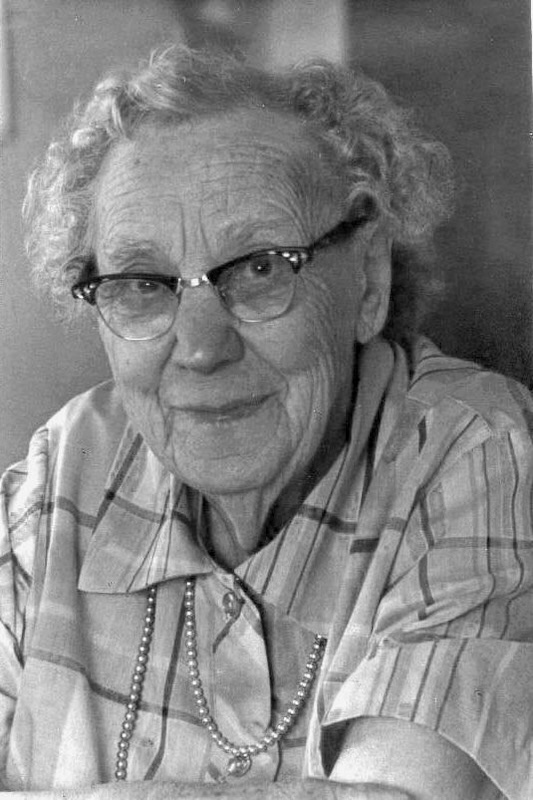
Nannie Escola, c. 1970. Courtesy of the Kelley House Museum.
When the Kelley House Museum was founded 50 years ago, retired teacher Nannie Escola was a self-styled historian who became part of the organization. Directors Dorothy Bear and Beth Stebbins found her a valuable fount of knowledge about Mendocino. Her reputation preceded her: people had been getting answers to their questions from Nannie for decades. The Kelley House archives hold a binder of “Thank You” letters to Nannie, full of appreciation for what she had told them or with another query.
Stanley Borden in 1970 wrote about the schooner Union Forever that went ashore in Mendocino Bay in 1863 and was purchased by the lumber mill boss Jerome Ford. Borden asked, “Did Ford get her sailing again or did he salvage her?” Nannie had to answer, “We don’t know.” Columbia Geneva Steel Company in San Francisco in 1958 wrote to confirm their belief that Caspar Lumber Company was the first in the state, in 1887, to use their wire rope for hauling logs in the woods. It was 1/2” and 3/4” in size. We don’t have Nannie’s answer to that one.
Could Nannie confirm the dates for the ship Elizabeth Buckly, the bark Hyack, and the schooner James Townsend all wrecking on the north side of Point Arena Cove, asked Humboldt County Historical Society member Wallace Martin in 1958? In 1972, Robert Beihler, a model ship builder, needed photos and plans for a small two masted “doghole” schooner. In 1962 there was thanks to Nannie for locating Hargraves family plots in local cemeteries.
In 1967 the Mendocino County Historical Society asked Nannie to pinpoint all the shipping points before 1900. The Western Railroader magazine editor Francis Guido wrote asking for the history of Rockport. A chatty 1963 letter from the son of Mendocino old-timer Ludwig “Louie” Larson told Nannie the old Madiera house on Portuguese Flat sold for $30,000.
Richard Tooker of the San Francisco Maritime Museum approached Nannie looking for an 1865 tax collector’s assessment. Editors at Wood & Iron magazine wanted to know the intended purpose of a shipment by Caspar Lumber Company in 1904 of 400 poles 30’ in length. Were they to become power utility poles? Someone else needed to know where Buster’s Beach was. Nannie said it was the first cove north of Schooner Gulch in 1875.
Many requests were for reprints of photographs of which she had a huge collection. Earl Christensen of the Humboldt County Historical Society wanted an agreement to use an image of the Needle Rock Landing on the county’s north coast. The Bancroft Library of UC Berkeley often referred questions to Nannie, and Time Life Books sent a thank you note for photos of loggers.
James O’Donnell sent Nannie an acknowledgement for a photo of the steamer Cacique from Chile. In 1909 at the age of 20 he had loaded her with lumber from Mendocino Lumber Company and worked three days to earn a $20 gold piece.
If these tidbits interest you, the binder holding all this correspondence can be read at the Kelley House by appointment.
The Kelley House Museum is open from 11AM to 3PM Friday through Sunday. If you would like to meet with the curator, reach out to curator@kelleyhousemuseum.org to make an appointment. Walking tours of the historic district depart from the Kelley House regularly.